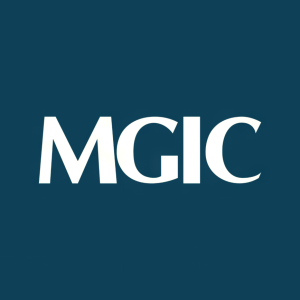Welcome to our dedicated page for Mgic Inv Cp SEC filings (Ticker: MTG), a comprehensive resource for investors and traders seeking official regulatory documents including 10-K annual reports, 10-Q quarterly earnings, 8-K material events, and insider trading forms.
Sorting through MGIC Investment Corporation’s dense disclosures can be challenging—especially when you’re trying to spot how changing delinquency rates affect loss reserves or whether capital meets PMIERs. If you have ever wondered, “How do I find MGIC’s reserve roll-forward in the 10-K?” or searched for MGIC insider trading Form 4 transactions, you know the time sink.
Stock Titan solves that problem. Our platform ingests every MGIC filing—10-K annual report, 10-Q quarterly earnings report, 8-K material events, proxy statement executive compensation, and live Form 4 insider transactions—within minutes of hitting EDGAR. Then our AI summarizes key sections in plain English, flags unusual credit risk transfer language, and links footnotes so you can understand MGIC SEC filings explained simply. Typical use cases include:
- Instant alerts on MGIC quarterly earnings report 10-Q filing to compare new insurance written and default trends.
- Real-time push notifications for MGIC Form 4 insider transactions real-time so you can monitor executive stock purchases.
- Side-by-side views of historical 10-K data for multi-year loss ratio analysis.
Whether you’re tracking MGIC earnings report filing analysis or need the MGIC annual report 10-K simplified, Stock Titan’s expert layer distills hundreds of pages into actionable insights. Stop hunting through PDFs—our AI-powered summaries, comprehensive real-time coverage, and easy download tools let you focus on decisions, not document navigation.
MTG filed a notice under Rule 144 for a planned sale of restricted stock by an affiliated holder. The filing covers 30,000 shares of common stock to be sold through Fidelity Brokerage Services on the NYSE, with an aggregate market value of $847,200.00 and 223,740,981 shares of common stock outstanding.
The 30,000 shares were acquired on 03/10/2024 through restricted stock vesting from the issuer as compensation. The same seller, Salvatore A. Miosi, has already sold 30,000 shares of common stock in each of the last three months, with gross proceeds of $829,892.19 on 09/02/2025, $844,632.74 on 10/01/2025, and $825,593.15 on 11/03/2025.
MGIC Investment Corporation director files Form 4 reporting routine equity awards. On 11/20/2025, the director acquired 160.644 shares of MGIC common stock through dividends paid on previously awarded restricted stock units under the company’s omnibus incentive plan, bringing their directly held common stock to 29,954.8631 shares. The director also acquired 24.115 additional deferred compensation share units, increasing their position in these cash-settled share units to 4,496.4999 units. These share units track MGIC’s common stock price on a one-for-one basis, are settled in cash on specified distribution dates, and were received via compensation deferral and phantom dividend reinvestment with no cash price paid by the director.
MGIC Investment Corporation (MTG) director reported routine equity-related transactions. On 11/20/2025, the director acquired 112.917 shares of common stock, described as dividends paid on previously awarded restricted stock units under the company’s omnibus incentive plan, with no price paid by the director. Following this, the director directly beneficially owned 39,351.3064 shares of common stock.
The filing also shows the director acquired 265.662 share units under MGIC’s Deferred Compensation Plan for Non-Employee Directors, bringing the total to 49,537.2661 share units. These share units track MGIC common stock on a one-for-one basis, are cash-settled on specified distribution dates, have no fixed exercise price or expiration date, and include additional units from phantom dividend reinvestment for which the director paid no cash.
MGIC Investment Corp. (MTG) director equity update. A company director reported acquiring 26.83 shares of MGIC common stock on 11/20/2025. These shares were issued as dividends paid on Restricted Stock Units granted under MGIC’s 2020 Omnibus Incentive Plan, and the director did not pay any cash price for them.
After this transaction, the director beneficially owns 16,506.9634 shares of MGIC common stock directly and 323,576 shares indirectly through a family trust. The filing indicates it was made by one reporting person and includes an option to designate trades under a Rule 10b5-1 trading plan.
MGIC Investment Corporation director reports additional stock and share units. A director of MGIC Investment Corporation (MTG) reported acquiring 160.644 shares of common stock on 11/20/2025, increasing direct beneficial ownership to 29,954.8631 shares. The filing also shows the director acquired 104.72 deferred share units on the same date, bringing total deferred share units to 19,526.7936.
The common shares were received as dividends paid on previously awarded restricted stock units under MGIC’s Omnibus Incentive Plan, with no cash paid by the director. The deferred share units were obtained through MGIC’s Deferred Compensation Plan for Non-Employee Directors and phantom dividend reinvestment, and their value tracks MGIC’s common stock on a one-for-one basis and is settled in cash at specified distribution dates.
MGIC Investment Corporation (MTG) director reports small stock acquisition from RSU dividends. A company director acquired 7.138 shares of MGIC common stock on 11/20/2025, recorded as an "A" (acquired) transaction. These shares represent dividends paid on Restricted Stock Units granted under MGIC's Omnibus Incentive Plan, and no cash price was paid by the director for them. After this transaction, the director beneficially owned a total of 1,331.062 shares of MGIC common stock in direct ownership. This is a routine equity compensation-related update rather than a major open-market trade.
MGIC Investment Corporation (MTG) filed a Form 4 showing that a director increased their holdings through stock-based compensation and dividend-related awards. On 11/20/2025, the director acquired 74.557 shares of common stock, described as dividends paid on Restricted Stock Units under the company’s Omnibus Incentive Plan, leaving them with 34,417.5201 common shares held directly.
The filing also reports derivative holdings in the form of Share Units under the Deferred Compensation Plan for Non-Employee Directors. On the same date, the director acquired 157.492 Share Units, bringing their total to 29,367.1778 Share Units. These units track MGIC common stock on a one-for-one basis, are settled in cash on a specified date, and were acquired through phantom dividend reinvestment with no cash price paid by the director.
MGIC Investment Corporation director reported a small increase in ownership through automatic equity awards. On 11/20/2025, the reporting person acquired 154.856 shares of MGIC common stock, coded as an "A" transaction, which indicates an acquisition. These shares represent dividends paid on Restricted Stock Units under the company’s Omnibus Incentive Plan, and no price was paid by the insider for them.
Following this transaction, the reporting person beneficially owned 28,884.4219 shares of MGIC common stock in direct ownership form. This is a routine equity compensation-related adjustment rather than an open-market purchase or sale.
MGIC Investment Corporation director reports routine share accrual. A director of MGIC Investment Corp. (ticker MTG) acquired 7.138 shares of common stock on 11/20/2025, reported as an “A” (acquired) transaction. This increased the director’s beneficial ownership to 1,331.062 shares held directly.
The new shares were issued as dividend equivalents on Restricted Stock Units granted under MGIC’s Omnibus Incentive Plan, and the reporting person did not pay a purchase price for them. The filing is made on behalf of the director by an attorney-in-fact and reflects ongoing equity-based compensation rather than an open-market trade.
MGIC Investment Corporation director reports routine equity awards on Form 4. On 11/20/2025, the reporting person acquired 125.313 shares of common stock through dividends paid on Restricted Stock Units under the company’s Omnibus Incentive Plan, bringing their directly owned common stock to 29,816.8071 shares.
The director also acquired 104.72 Share Units under the MGIC Investment Corporation Deferred Compensation Plan for Non-Employee Directors, increasing their directly owned Share Units to 19,526.7936 units. These Share Units track MGIC’s common stock price on a one-for-one basis and are settled in cash on specified distribution dates, including amounts from phantom dividend reinvestment, with no exercise price paid.


